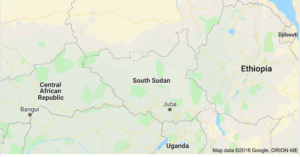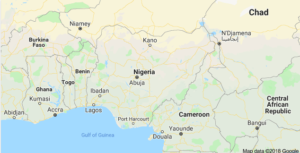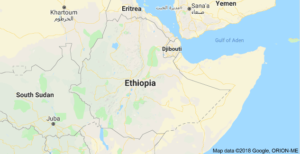Contemporary armed conflicts increasingly do not differentiate between military operations and concentrations of civilians, and entire countries are being treated as battlefields…[resulting] starvation and famine are large-scale violations of the right to food. Conflict and the Right to Food (A/72/188).
According to FSIN’s 2019 Global Report on Food Crises, more than 113 million people across 53 countries experienced acute hunger requiring urgent food, nutrition and livelihoods assistance in 2018. The worst food crises occurred in 8 countries–Yemen, the Democratic Republic of the Congo, Afghanistan, the Syrian Arab Republic, the Sudan, South Sudan and northern Nigeria–accounting for nearly 72 million people facing acute food insecurity. Despite a slight overall improvement from 2017, it is expected that the drivers of food insecurity in 2018–conflict and insecurity, climate shocks and economic turbulence–will continue to erode livelihoods and destroy lives.
Famine describes a situation in which an entire population or sub-population lacks any access to food, and consequently faces a heightened risk of imminent death. To reach “famine” status, at least 20 per cent of households in a given group experiences extreme food deficit, without the ability to cope, acute malnutrition prevalence exceeds 30 per cent; and mortality rates exceed 2 people per 10,000 inhabitants per day. In situations of famine, States have not only failed to protect, respect, and fulfill the right to food of their populations, but they may also be responsible for the violation of other human rights, including the right to life.
While famine is caused by a myriad of factors, it is exacerbated by climate change, natural disasters and especially, human-made conflict. Accordingly, the Special Rapporteur has called for a global convention that gives States and the international community clear legal mandates to prevent famine and protect people’s right to adequate food, among other recommendations to States.
Breaking: Introducing the ‘Crime of Starvation’ in Non-international armed conflict (NAIC)
On 6 December 2019, the Assembly of the Parties to the ICC unanimously voted to adopt a Swiss proposal that extended the international war crime of starvation to include NIAC. Pursuant to Article 121 (5) of the Rome Statute, this new war crime will apply only to members of the ICC that ratify the amendment as of one year following the ratification. Despite this limitation, the amendment marks a historic moment in closing a long-recognized gap in protection for those who have experienced starvation at the hands of national actors.
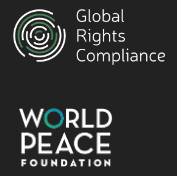 How Can International Law Advance the Prevention, Prohibition and Accountability for Mass Starvation? LEARN MORE
How Can International Law Advance the Prevention, Prohibition and Accountability for Mass Starvation? LEARN MORE
Here are some of the most pressing food crises warranting immediate attention and action from the international community.
Yemen
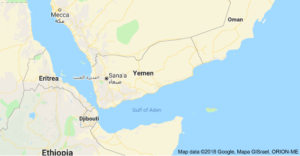
Yemen, one of the poorest countries in the Arab region, is currently experiencing one of the most severe humanitarian crises due to an ongoing civil war between Houthi rebels and supporters of Yemen’s internationally-recognized government. Since the war’s start in 2015, more than 16,400 civilians have been killed or injured, over three million people have been displaced, and 75 percent of its population are currently in need of immediate aid. As of November 2018, an estimated 85,000 Yemeni children under the age of 5 were estimated to have died of starvation and 14 million people were facing pre-famine conditions.
The severity of the crisis is largely attributed to this human-made conflict; nearly 90 percent of Yemen’s food is imported, however, air raids and a blockade on the country’s aid and sea ports have deprived the population of food and medicine. However, a severe cholera outbreak that began in late April 2017 has disproportionately impacted malnourished individuals and has exacerbated the famine crisis.
At least 1,600 deaths have resulted from poor sanitation and hygiene conditions, a lack of clean water, and the near collapse of the health-care system. Without scaling up emergency food assistance programs and immediate action by the State and international community, the situation is only expected to further deteriorate.
In November 2018, the United Nations announced that it was ready to play a supervisory role in managing the Hodeidah port, which before the beginning of the war in March 2015, handled more than 70 percent of the country’s imports. In December 2018, parties signed an outline peace agreement in Stockholm, which included an UN-administered oversight team taking control of the port, the introduction of new security across the port city and a phased ceasefire across the region.
As of early January 2019, however, the UN humanitarian co-ordinator, Martin Lowcock reported to the Security Council that the situation remains dire, with more than 24 million people remained in need of humanitarian assistance, including 10 million on the brink of famine.
For more information on the Yemen food crisis, visit the following:
- FAO in Emergencies, “Crisis in Yemen”
- International Committee of the Red Cross, “Yemen in Focus”
- International Rescue Committee, “Yemen: Civilians Under Siege”
- World Food Programme, “Yemen emergency”
For featured articles on the crises, see “Food in the News“
South Sudan
The fragile food security situation in South Sudan, a country impoverished by decades of war, has been severely compounded by the outbreak of civil war in 2013. Over 4 million people have been displaced due to flighting, and nearly 2.5 million have fled to neighbouring countries, mostly women and children. The conflict has spurred an economic decline, with food stock depleting and food prices increasing.
Over 7.1 million people – half the country’s population – are facing extreme and deadly hunger. While the war continues the situation can only get worse. After announcing famine status at the beginning of 2017, the magnitude of food insecurity has been downgraded due to humanitarian assistance. However, 45,000 people in Unity and Jonglei are at risk of starvation and the situation also remains dire nationwide, with a significant overall increase in food insecurity.
For more information on the South Sudan food crisis, visit the following resources:
- UN News, “South Sudan: A year after averting famine, ‘food insecurity outlook has never been so dire,’ UN Warns”
- Oxfam International, “Famine in South Sudan: communities at breaking point”
- FAO in Emergencies, “South Sudan”
Syria

Before the conflict, the Syrian Arab Republic was the only country in the region that was self-sufficient in terms of food production, with some 40 per cent of livelihoods linked to agriculture. War has led to the destruction of much of the agricultural infrastructure, and the longer the conflict continues the more costly it will be to restore agricultural capacity. Some $16 billion has been lost in terms of production, along with damaged and destroyed assets and infrastructure within the agricultural sector
Since March 2011, half of Syria’s 22 million population have fled the country and 5.6 million refugees are living in neigbouring countries of Jordan, Lebanon and Turkey in what amounts to the largest refugee crisis in the world. Many of these refugees are experiencing hunger and poverty. Of the 13 million civilians who have remained in Syria, there is a desperate need of humanitarian aid, yet the sheer scale of the Syrian humanitarian crisis has stretched aid agencies beyond their capacities.
At the beginning of 2016, the United Nations believed that some 400,000 civilians were living under siege in 15 towns in the Syrian Arab Republic, 32 with the former Secretary-General warning that the use of starvation as a weapon constituted a war crime. In October 2016, the 250,000 residents of Aleppo were besieged and bombarded, with the Government rejecting the requests of the United Nations to deliver aid.
For more information on the Syrian food crisis, visit the following resources:
- FAO in Emergencies, “the Syrian Arab Republic”
- USAID, “Food Assistance Fact Sheet: Syria”
- World Food Programme, “Syrian Arab Republic”
Democratic Republic of the Congo
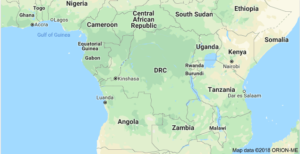
Ongoing conflict has internally displaced approximately four and a half million Congolese, making it the largest displacement crisis in Africa. As of June 2018, nearly two million people, previously displaced, returned to their homes, but are increasingly in need of food assistance having missed several harvests.
Conflict has also has led to an eight-fold increase in hunger and thirteen million people are in urgent need of humanitarian assistance, including almost eight million suffering from severe food insecurity-a 30 percent increase in the past year. Almost half of this population live in the Kasai region.
For more information on the DRC food crisis, visit the following resources:
- World Food Programme, “Democratic Republic of the Congo”
- FAO in Emergency, “Crisis in the Democratic Republic of the Congo”
- IFPRI Food Security Portal, “Democratic Republic of the Congo“
North-east Nigeria
North-east Nigeria has historically been prone to periodic food crises and comprises some of the poorest federal states of the country. The magnitude of the effect of protracted war between the Nigerian army and the extremist group Boko Haram recently became evident when the group retreated from previously occupied territory. As Boko Haram fell back, thousands were discovered to be living in famine-like conditions.
Around 5.2 million people are severely food insecure and in need of emergency assistance, and pockets of famine-like conditions have been identified in Borno and Adamawa States, affecting around 50,000 people. There are still areas under the control of Boko Haram that aid agencies cannot reach, meaning that the full extent of the conditions facing trapped populations is unknown.
This is Africa’s fastest growing displacement crisis, with alarming levels of sexual violence, human rights abuses and forced recruitment, even of young children.
Conflict has led to the closure of some of the largest markets in Africa, having an impact on cross-border trade in cattle, dried fish and agricultural products. Local agricultural systems in the region have been disrupted by the destruction of farming and irrigation facilities and the crisis is intensifying challenges already faced in relation to cyclical droughts and floods.
For more information on the food crisis affecting the Lake Chad region, visit the following resources:
- Disaster Emergency Committee, “Nigeria Food Crisis”
- Al Jazeera News, “Nigerians coping with food shortage…”
- ICRC, “Hunger in Nigeria”
Ethiopia and Somalia
Ethiopia is still responding to droughts from the 2015-2016 El Nino, which has caused large-scale displacement and in the southern and south-eastern lowland areas of Ethiopia where the dominant livelihood is pastoralism. Food insecurity affects an estimated 8.5 million people, with about half of that population suffering from acute malnutrition.
In Somalia, effects of the drought compounded by enduring conflict with terrorist groups have led to trade disruption, food shortages, and high food prices. As a result, about 6.7 million people, more than half of the population, are experiencing acute food insecurity.
For more information about the food crisis in the horn of Africa, visit the following resources:
- UNDP, “The food situation in Ethiopia is also of great concern”
- Oxfram, “Drought in East Africa”
- World Food Programme, “Horn of Africa Crisis“

